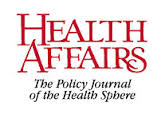Readmissions Down But Observation Status Up
New research suggests that the general decline in hospital readmissions may be leading to increased use of observation status.
According to new research in the journal Health Affairs,
Our independent analysis of Medicare data published by CMS revealed that the top 10 percent of hospitals with the largest drop (16 percent on average) in readmission rates between 2011 and 2012 also increased their use of observation status for Medicare patients returning within 30 days by an average 25 percent over the same time period.
 The practice appears to be affecting privately insured patients, too, with the report noting that
The practice appears to be affecting privately insured patients, too, with the report noting that
…hospitals that reduced readmissions within 30 days also increased their share of returning observation patients in private plans. The top third of hospitals with the largest six-year (2009-2014) reduction in 30 day readmissions (26 percent on average) increased their share of returning observation patients in private plans by an average of 45 percent (Figure 2). Much of that increase started in 2012, the same year that Medicare hospital readmission penalties began.
The report concludes that
Our findings suggest that at least some hospitals are substituting observation status for inpatient readmissions, both for Medicare and privately insured patients. These trends raise a number of questions. For instance, do observation patients get the same quality of care as inpatients? Further, do drops in readmission rates truly mean that hospitals are providing better quality care? Or… is it merely that some hospitals are avoiding penalties by relabeling patients they previously would have readmitted as observation patients?
Learn more about the study, its findings, and its potential implications in the article “Is Observation Status Substituting For Hospital Readmission?” here, on the Health Affairs web site.







